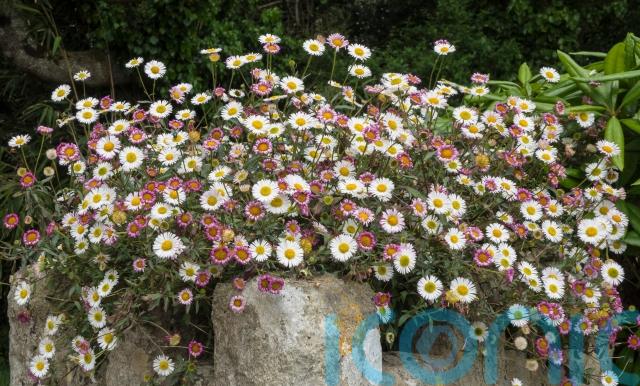
The RHS is predicting that traditional bedding plants may be losing popularity in 2025, particularly in community gardens and public landscapes.
In its latest trends forecast, it anticipates they may be replaced by more long lived, less thirsty and robust varieties.
“It’s partly cost and partly environmental,” says Guy Barter, RHS chief horticultural advisor. “Throwing fertiliser and water at bedding plants to get that wonderful effect is also more expensive and some people are concerned about climate change.
“And once people see perennials, they realise that there are some really flexible and productive ones which have crept up in popularity.”
Salvias, heather and dahlias have proved particularly popular alternatives with community gardening groups over the past 12 months, requiring little maintenance but providing the same sought-after pops of colour and pollinator appeal, says the RHS.
Barter says: “Plant breeders and nurserymen have gone to a lot of trouble to select and breed perennial plants that will flower well the first year and will then, if conditions are right, survive and flower in subsequent summers, unlike bedding plants which usually die at the end of the summer.”
Bedding plants can be a poor choice for gardeners who care about the environment or wildlife, says Emma O’Neill, head gardener at horticultural charity Garden Organic.
“Due to their cosseted upbringing (in ideal conditions) they’re usually sprayed with pesticides and grown in peat. All of this breeding often means that they’re of little or no use to foraging insects or pollinators as they can be sterile or double flowered, where stamens are replaced with petals.
“In addition, because of their perfect growing conditions in a nursery environment they do not easily adapt to climate fluctuations and commonly sulk in our increasingly unpredictable climate.”
O’Neill recommends the following perennial substitutions:
Hardy geranium ‘Rozanne’
Mexican fleabane (Erigeron karvinskianus)

A self-spreading plant that will grow readily in cracks and crevices. It has pretty, daisy-like flowers and delicate foliage. It will grow in a range of conditions in full sun and is drought tolerant but prolonged periods of dry will reduce the amount of blooms.
Periwinkle (Vinca minor)
A mat-forming, low-growing evergreen shrub that produces violet blue flowers sporadically from summer to autumn. It tolerates full and part shade, and sun.
Sea Holly (Eryngium planum)
Wall bellflower (Campanula portenschlagiana)
Wallflower ‘Bowles’s Mauve’ (Erysimum)
Bushy evergreen growing up to 75cm producing racemes of scented mauve flowers. Requires full sun. Short-lived perennial but easily propagated from cuttings. Flowers are pollen/nectar rich and attract moths, butterflies and bees.
Californian lilac (Ceanothus thyrsiflorus var.repens)
Rudbeckia
“Rudbeckia ‘Goldsturm’ works well as a central plant, surrounded by a grass such as Mexican feather grass (Stipa/nassella tenuissima), which self-seeds very easily. Or you could try evergreen Lavandula ‘Hidcote’ with campanula around the base,” O’Neill recommends.
Alstroemeria
“They would replace any upright bedding plants for borders or containers, but probably don’t sprawl enough for hanging basket plants.”
Penstemon
Trailers
Replace trailing lobelia with trailing rosemary, Barter suggests, or creeping Jenny (Lysimachia nummularia) or campanula, with blue flowers and white eyes, which are very tough.
Echinacea
“There has been a question mark over echinaceas as they are not the easiest to keep going, but breeders are getting better. Types which have won our Award of Garden Merit include ‘Pink Shimmer’, ‘Elton Night’ and ‘Glowing Dream’,” Barter says.
Thrift
Subscribe or register today to discover more from DonegalLive.ie
Buy the e-paper of the Donegal Democrat, Donegal People's Press, Donegal Post and Inish Times here for instant access to Donegal's premier news titles.
Keep up with the latest news from Donegal with our daily newsletter featuring the most important stories of the day delivered to your inbox every evening at 5pm.